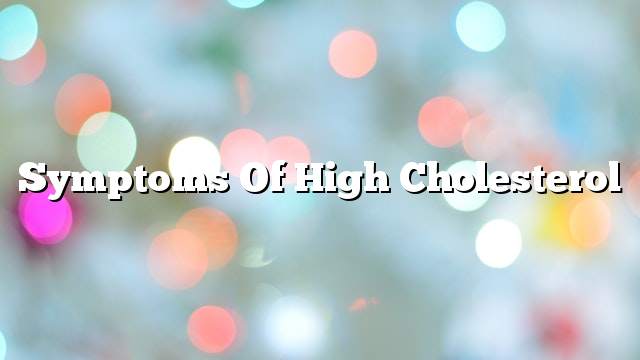Cholesterol
A type of fat in the blood, produced by the liver as well as the possibility of eating certain foods, is necessary for the formation of cell membranes, vitamin D, and some hormones, the fats that do not melt in the water are transported by lipoproteins in the bloodstream, and there are two of these proteins Fatty:
- LDL: Known as bad cholesterol, which causes the accumulation of fat in the arteries causing serious diseases, most notably heart attacks and strokes.
- HDL: Known as good cholesterol, responsible for reducing the risk of heart disease and heart attacks.
Eating high-fat foods increases the rate of cholesterol in the blood. This condition is called high cholesterol. If cholesterol levels are too high or low, they cause fat to build up on blood vessel walls, causing blood flow to cause the body to become seriously ill and affect the functioning of organs and organs. Especially the brain and heart.
Symptoms of high cholesterol
Coronary artery
Of the symptoms that indicate coronary artery disease, which is one of the deadly diseases of both sexes:
* Sharp chest pain.
- Extreme tiredness with nausea.
- Tightness and difficulty breathing.
- Pain in the bones of neck, jaw, abdomen, and back.
heart attack
Occurs when the blood extension of the brain stops due to the accumulation of plaque in the bloodstream. The oxygen pump stops the death of the brain tissue unless it is supplied with blood during a rapid time. Signs and symptoms of stroke include:
- Loss of control of the body with loss of balance.
- Sudden dizziness.
- Disturbance of the facial features with a deviation of the features of one side.
- Loss of mobility.
- The numbness of the body organs of the face, arm and leg is usually one side.
- Dark, blurry, blurred vision with double vision.
- Headache and severe pain in the head.
- Heart attack.
Arteriosclerosis
The occurrence of atherosclerosis and the result of the accumulation of plaque in the arteries leading to the heart causing blood clots, prevent the arrival of blood and oxygen to the heart, and the arrival of food, and part of the heart begins to die causing heart attack, and signs of heart attack:
- Wrench in the chest and arms.
- Breathing difficulty.
- Dyspepsia, nausea.
- Fatigue and fatigue.
- Heart attack may be dangerous unless it is treated quickly and definitively.
Peripheral arteries
Occurs as a result of the accumulation of plaque on the walls of the arteries obstructing the arrival of blood to the kidneys, stomach, legs, and feet, and include symptoms:
- The occurrence of cramps.
- Fatigue and tiredness.
- Leg pain causes temporary limp.
- The death of tissues due to the interruption of oxygen and food, and this is called gangrene.
- Injury of saints and legs with ulcers can not be treated easily.
- Increase nail thickness and turn blue.
- Contractions and contractions in the leg.
- Low hair growth rate in the legs.
- Lower side cooler.
